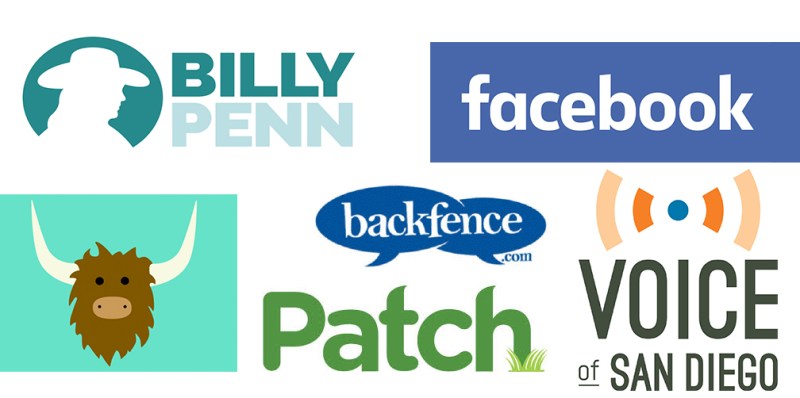Local newspapers may have slimmed down in recent years, but the demand for local news hasn’t.
Just check Facebook. People are asking about the helicopter flying overhead or the store that will replace that shuttered pizza place around the corner. They’re looking for babysitters and lawn mowers and dog walkers. They’re looking for local news, and they’re not always finding it in the rudimentary WordPress websites that local newspapers publish.
It’s partly because fund-strapped traditional media is no longer covering the local news that meets their needs. The remaining local news organizations are trying out new models of content generation and revenue sources to meet those needs. The new strategy? Build and engage a loyal local audience and the business will follow.
Bill Densmore, a researcher on the future and sustainability of journalism and former fellow at the Donald W. Reynolds Journalism Institute (RJI) at the Missouri School of Journalism, says the problem with local online news lies in the answer to one question: Why do legacy news organizations at the local level have boring coverage?
“They have forgotten how to listen to their audience,” he said. “They have, instead, been listening for the last 20 years to the marketing department. When it comes to the web, they’ve been counting eyeballs.”
That’s no surprise when traditional news organizations have seen their business model break down. Print advertising fell from $47.4 billion in 2005 to only $16.4 billion in 2014, according to the Pew Research Center. Digital advertising revenue is increasing, but not enough to make up for the print advertising losses. Papers have shuttered, and digital “hyperlocal” organizations have had mixed success in filling the void.
Five years ago, those local digital sites were popping up in small towns and city neighborhoods across the country. At its height, hyperlocal news network Patch.com operated in over 900 communities. But that reach proved to stretch them too thin.

Mark Potts is a hyperlocal news entrepreneur himself. He started Backfence, a hyperlocal network on the East Coast similar to Patch, that closed its doors in 2007 after three years of operation. Potts said the Patch lost credibility in his town because the site missed covering a Thanksgiving Day fire that burned down the local church.
“If they were willing to aggregate, they could have done a very nice story,” Potts said. “But if they didn’t do it themselves, they didn’t think it was worth doing, and that was a huge mistake.”
Aggregating content, as the Billy Penn in Philadelphia does, is one way that local news organizations can get community involvement. They can pull tweets from community leaders and other media from the local radio and television station.
The Voice of San Diego takes a different approach. The non-profit news organization hosts monthly coffee meetings with editors and other cultural events for their members. Voice of San Diego’s content is free, but they ask for readers to donate anything from $35 to $5,000 to become members.
Publisher and COO Mary Walter-Brown, who spoke at a #ONA15 panel on raising revenue, believes building a relationship with the audience is just like building a relationship with a friend or family member.
“It takes constant two-way communication, accessibility, listening and responding to their needs,” Walter-Brown said. “That’s really different than how most news organizations approach it. Usually, they decide what stories to cover and then go after them.”
The biggest challenge is turning casual readers into members who will support Voice of San Diego’s investigative journalism. Currently, the Voice has almost 2,000 members; San Diego’s population is more than 3 million. To supplement the membership support, the organization relies on several revenue streams, including a native advertising platform that showcases stories on local nonprofits, another added-value element for the community.
Still, a lot of communities do not find their local news on news sites, but rather, on social media. Yik Yak, an app designed to anonymously connect people with everyone around them, has found that local content performs the best on the platform.
“Almost everything that’s relevant to you has to do with where you are,” said Yik Yak co-founder Brooks Buffington, who spoke at a panel on hyperlocal conversations. Users can curate the community’s feed by “upvoting” posts.
And it’s not just on Yik Yak. Snapchat, Facebook and Twitter also give users means of controlling the content. That type of engagement could mean that the community could take on new roles in the local news ecosystem.
“That’s a real mind-blowing change for legacy journalists who are used to being gatekeepers,” Densmore said. “Journalists need to be stewards of local news.”
Perhaps a local sustainable business model is less about revenue streams and more about building a loyal user base.
“It should be community-driven because the people know better than any reporter,” Potts said. “It’s hard to do, but it’s a really important part because they feel like they have ownership.”
The future of local news online depends on the pride that the community takes in their local site, the same type of pride they take in the high school baseball team. This time, though, local news are reversing the “build-and-they-will-come” approach.
Experts Weigh In On Finding The Loyalty of Your Online Audience







You must be logged in to post a comment.